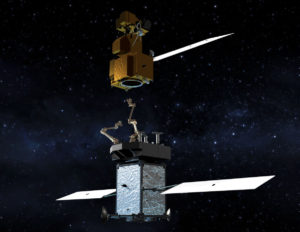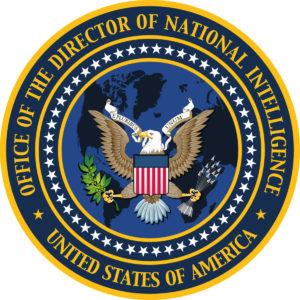The threat of space warfare was spotlighted in recent testimony by Daniel Coats, Director of National Intelligence in a May 11 hearing of the U.S. Senate Select Committee on Intelligence.
Coats reviewed the worldwide threat assessment of the U.S. intelligence community, noting an appraisal that “Russia and China perceive a need to offset any U.S. military advantage derived from military, civil, or commercial space systems and are increasingly considering attacks against satellite systems as part of their future warfare doctrine.”
Destructive systems
Coats reported that both countries “will continue to pursue a full range of antisatellite (ASAT) weapons as a means to reduce U.S. military effectiveness.”
Some new Russian and Chinese ASAT weapons, including destructive systems, Coats added “will probably complete development in the next several years. Russian military strategists likely view counterspace weapons as an integral part of broader aerospace defense rearmament and are very likely pursuing a diverse suite of capabilities to affect satellites in all orbital regimes.”
Directed energy weapons
China and Russia are also advancing directed energy weapons technologies for the purpose of fielding ASAT systems “that could blind or damage sensitive space-based optical sensors,” Coats pointed out. “Russia is developing an airborne laser weapon for use against U.S. satellites. Russia and China continue to conduct sophisticated on-orbit satellite activities, such as rendezvous and proximity operations, at least some of which are likely intended to test dual-use technologies with inherent counterspace functionality.”

Satellite servicing is being explored by multiple nations, including the United States. Shown here in this artist’s rendering is the NASA Restore-L servicer as it extends its robotic arm to grasp and refuel a client satellite on orbit.
Credit: NASA
Space robotics
Coats testified that space robotic technology research for satellite servicing and debris-removal might be used to damage satellites.
“Such missions will pose a particular challenge in the future, complicating the U.S. ability to characterize the space environment, decipher intent of space activity, and provide advance threat warning,” Coats said in written testimony.
Electronic warfare
Additionally, the global threat of electronic warfare (EW) attacks against space systems will expand in the coming years in both number and types of weapons, Coats noted.
“Development will very likely focus on jamming capabilities against dedicated military satellite communications (SATCOM), Synthetic Aperture Radar (SAR) imaging satellites, and enhanced capabilities against Global Navigation Satellite Systems (GNSS), such as the US Global Positioning System (GPS),” Coats explained.
To read the Coats testimony — Worldwide Threat Assessment of the US Intelligence Community – can be viewed here:
https://www.dni.gov/files/documents/Newsroom/Testimonies/SSCI%20Unclassified%20SFR%20-%20Final.pdf



